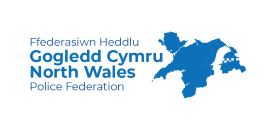Health and Safety Updates
Dear colleagues,
Firstly, I hope that you and your families are all well and safe during these testing times.
Health and Safety continues to make headlines – all for the right reasons I might add!
The purpose of this paper is to raise awareness of key Health and Safety issues and changes we’ve implemented recently to stream line our processes. Also, to highlight key findings of a Health and Safety audit earlier this year undertaken by our internal auditors – TIAA.
No matter what your views are about Health and Safety, your role, from Chief Officer Level, response officer, member of staff, volunteer or call handler, Health and Safety affects us all.
Policing is risky business which means that Health and Safety is central to what we do in the Police service.
From a legal and moral perspective we all have a part to play in safeguarding the health and wellbeing of ourselves, colleagues and families by maintaining safety standards across the Organisation.
Strong leadership and management commitment is directly related to safety performance as it demonstrates by example to employees what actions are needed, which in turn should influence what actions and behaviour employees initiate and maintain.
Please be assured that we are in a good place in terms of our Health and Safety Management systems and statutory responsibilities in line with our Policy and HSE legislation and regulations. However, there is always room for improvement!
To understand the basis of Health and Safety we need to understand what is a safety culture and what it means to us.
An effective safety culture is when an organisation places a high level of importance on safety, beliefs, values, attitudes and the safety of its employees. It can be characterised as ‘the way we do things around here’.
A positive safety culture can result in improved workplace Health and Safety and compliance with key aspects of the law and regulations.
As you would expect, managers play a key role in maintaining Health and Safety standards in North Wales Police (NWP), having legal responsibilities for the safety and care of those under their stewardship.
All supervisors and managers should attend a Health and Safety Management Training course in order for them to understand their responsibilities. Health and Safety is a wide subject and each manager and supervisor is expected to assess the needs of their teams and potential risks they face.
In terms of accessing information, it’s at your fingertips by logging onto our Health and Safety web site or contact the Health and Safety Manager who will offer advice and guidance. I may not have all the answers at my fingertips but I’ll try my best to help you.
Whatever your views are about Health and Safety – collectively, our overarching aim must be to make NWP safe and secure by working together. To this end, if you have any suggestions how to improve our service, please let me know. You may wish to consider:
- Are you happy with our current Health and Safety reporting processes and how to find key information on our web site?
- Do we need to review our existing processes?
- Is Health and Safety “pitched” at the right level within the organisation?
- Can we do more to raise awareness and raise the profile of Health and Safety in NWP?
- Do we have the right communication strategy in place and is it working effectively having regard to your needs?
You will probably have more questions and suggestions – if you do, I would like to hear from you so please get in touch.
Training:
One of the most important aspects of increasing Health and Safety awareness is the delivery of Health and Safety training, for example:
- first aid
- risk assessors courses
- fire steward training
- IOSH Managing Safely courses
The Health and Safety team work closely with our Trainers who do an excellent job and offer various NCALT packages in addition to classroom based training.
Due to shortages in key areas; we are keen to hear from members of staff who have an interest in becoming Fire Stewards, First Aiders and IOSH Managing Safely courses. Please contact me for more details.
Back to basics – Effective Communication:
There are many factors that influence how we should engage with colleagues and change attitudes.
Communication is an effective tool and to this end the Health and Safety team would welcome your views and suggestions how we can raise the profile and understanding of Health and Safety within the Organisation.
We have a dedicated web site and continue to publish a number of key documents and risk assessments so please visit this site. Again I would welcome your views how we can improve our communication links – the web site is a force wide resource for all our staff, not just Health and Safety, so please feel free to comment. Let me know what you think – can we improve our communication links?
Records Management
Good record keeping is important for Health and Safety and is a legal requirement under Health and Safety at Work Act 1974. Following discussions with colleagues we have recently amended all our reporting forms to make it easier to report injuries on duty, near miss incidents and Display Screen Equipment (DSE).
Regular review of our records and data analysis allows the Health and Safety team to identify any patterns, emerging trends or problematic areas. When we do, we will suggest changes to senior officers to improve safety standards for all concerned.
Reporting of Injury and Near Misses:
Health and Safety requires that we report, investigate and learn from all accidents and near miss situations. To this end we will analyse and record each incident and implement further actions if required, escalating any concerns to the Force’s Health and Safety Management Board.
It is important that we all understand the following as it is a legal requirement.
Line Managers MUST ensure that ALL injury and near miss reports are submitted promptly and that incidents are investigated and include their (LMs) investigation and findings on the forms in line with their legal responsibilities and Health and Safety Policy (attached).
Equally important is that any updates relating to injured Officers/staff are provided to the Health and Safety unit via the automated reporting system as soon as possible. This is particularly important when RIDDOR reports need to be submitted to HSE within statutory time frames. Failure to submit RIDDOR forms on time can have serious consequences for the organisation and individual(s) concerned.
The Force Health and Safety Policy (which is endorsed by the Chief Constable and the Police & Crime Commissioner) sets out the framework for the effective management and accountability in relation to our health and safety obligations. The Policy underpins our legal obligations under the Health and Safety at Work Act 1974, including accountability at all levels within the organisation.
Effective Health and Safety management can only be delivered by working together, in collaboration, to achieve the best possible outcomes driven by Chief Officers and Senior Management Teams (SMTs).
The Health and Safety team cannot be responsible for every aspect of Health and Safety within the Force – you have a role to play too.
More about RIDDOR reporting:
Deaths and injuries
If someone has died or has been injured because of a work-related accident this may have to be reported. Not all accidents need to be reported, other than for certain gas incidents, a RIDDOR report is required only when:
- the accident is work-related
- it results in an injury of a type which is reportable
Types of reportable injury
The death of any person
All deaths to workers and non-workers, with the exception of suicides, must be reported if they arise from a work-related accident, including an act of physical violence to a worker.
Specified injuries to workers
The list of ‘specified injuries’ in RIDDOR 2013 replaces the previous list of ‘major injuries’ in RIDDOR 1995. Specified injuries are (regulation 4):
- fractures, other than to fingers, thumbs and toes
- amputations
- any injury likely to lead to permanent loss of sight or reduction in sight
- any crush injury to the head or torso causing damage to the brain or internal organs
- serious burns (including scalding) which:
- covers more than 10% of the body
- causes significant damage to the eyes, respiratory system or other vital organs
- any scalping requiring hospital treatment
- any loss of consciousness caused by head injury or asphyxia
- any other injury arising from working in an enclosed space which:
- leads to hypothermia or heat-induced illness
- requires resuscitation or admittance to hospital for more than 24 hours
For further guidance on specified injuries is available on the HSE web site.
Over-seven-day incapacitation of a worker
Accidents must be reported where they result in an employee or self-employed person being away from work, or unable to perform their normal work duties, for more than seven consecutive days as the result of their injury. This seven day period does not include the day of the accident, but does include weekends and rest days. The report must be made within 15 days of the accident.
Over-three-day incapacitation
Accidents must be recorded, but not reported where they result in a worker being incapacitated for more than three consecutive days. If you are an employer, who must keep an accident book under the Social Security (Claims and Payments) Regulations 1979, that record will be enough.
Non-fatal accidents to non-workers (e.g. members of the public)
Accidents to members of the public or others who are not at work must be reported if they result in an injury and the person is taken directly from the scene of the accident to hospital for treatment to that injury. Examinations and diagnostic tests do not constitute ‘treatment’ in such circumstances.
There is no need to report incidents where people are taken to hospital purely as a precaution when no injury is apparent.
If the accident occurred at a hospital, the report only needs to be made if the injury is a ‘specified injury‘ (see above).
Occupational diseases
Employers and self-employed people must report diagnoses of certain occupational diseases, where these are likely to have been caused or made worse by their work.
These diseases include (regulations 8 and 9):
- carpal tunnel syndrome;
- severe cramp of the hand or forearm;
- occupational dermatitis;
- hand-arm vibration syndrome;
- occupational asthma;
- tendonitis or tenosynovitis of the hand or forearm;
- any occupational cancer;
- any disease attributed to an occupational exposure to a biological agent.
Dangerous occurrences
Dangerous occurrences are certain, specified near-miss events. Not all such events require reporting. There are 27 categories of dangerous occurrences that are relevant to most workplaces, for example:
- the collapse, overturning or failure of load-bearing parts of lifts and lifting equipment;
- plant or equipment coming into contact with overhead power lines;
- the accidental release of any substance which could cause injury to any person.
Further guidance on these dangerous occurrences is available on the HSE web site. Additional categories of dangerous occurrences apply to mines, quarries, offshore workplaces and relevant transport systems (railways etc).
Display Screen Equipment (DSE):
As we all know, whether you are working from home or in an Office, working with DSE is associated with a wide range of health problems such as backache, headache, pains in the fingers or wrists, musculoskeletal injuries and all of these can affect an individual’s wellbeing through anxiety and work-related stress.
Early intervention is important since most of the injuries can be avoided or managed by straight forward changes to the work station, the working practice, working environment or the task. All NWP employees have been designated as DSE users and legislation requires that work station assessments are fit for purpose and that relevant training is provided by line managers.
Users shall complete an on-line self-assessment
- every two years, or
- they move to another location to use other equipment, or
- if there are any significant changes made to their work stations, such as new furniture or equipment, and
- if they are working from home
Once a member of your staff has carried out the on-line assessment, any issues will be flagged up on the system and line managers must ensure that these issues are investigated and appropriate corrective or preventative action is taken.
Audit report:
Now to the audit report, findings and recommendations. The auditors have appraised the adequacy of the arrangements for managing the Health and Safety requirements of the organisation and considered the arrangements for compliance with key requirement of Health and Safety legislation.
I don’t intend to go into detail, however, I would like to flag up the auditor’s main findings which are concerning.
- Deadlines for reporting RIDDOR incidents (Reporting of Injuries, Diseases and Dangerous Occurrences) to the Health and Safety Executive (HSE) are not being met.
- Evidence of fire and safety equipment testing is generally not being maintained.
- Line manager input is required on accident and near-miss forms in order to facilitate the work of Health and Safety staff.
- It is recommended that Health and Safety staff undertake annual audits of arrangements to identify non-compliance with legislative requirements.
It is important that we realise that failure to comply with these areas potentially:
- places Officers and Staff at risk of harm
- result in reputational damage to the Force and potentially have a financial impact on the organisation.
The good news – we have already implemented a number of key measures to address the auditor’s findings and recommendations, some of which are listed below. I would like to bring these to your attention.
Communication Implemented to date:
- Risk raised and discussed at last Health and Safety Management Board Meeting.
- Awareness of Risk presented to SMTs and other Strategic and Consultation Meetings to reinforce compliance.
- Support provided to all staff in completion and submission of RIDDOR Form.
- RIDDOR is covered during IOSH Managing Safely Courses.
- Email circulated to all LPS Supervisors regarding reporting of Injuries, Near Misses and DSE compliance.
- Need to Knows prepared, approved and ready for circulation incrementally across Force covering RIDDOR Reporting, Injury on Duty, Near Miss, and DSE submissions.
- Regular feedback provided to Line Managers for DSE anomalies and within 7-10 days of submission.
Scrutiny Implemented to date:
- Increased monitoring by Health and Safety Manager of RIDDOR reporting processes.
- Process now exists to record fire testing systems and visual checks.
- Records checked on weekly basis by the Health and Safety Administrator for the testing of fire equipment.
- Near miss and injury forms are reviewed for completeness and actioned accordingly.
- DSE Forms are checked as soon as possible following submission via the Health and Safety portal by Health and Safety Manager.
- A representative will attend the Health and Safety Management Meetings in the absence of the designated person as set out in the Board’s Terms of Reference.
- IOSH Managing Safely Courses cover RIDDOR reporting, legislation, reporting of Injuries on duty, Near Miss and DSE Reporting, and other key elements of Health and Safety.
Further measures/intervention will be rolled out during the coming weeks.
As your Health and Safety Manager, I am confident we will achieve our goals. However, I will need your help, support and cooperation to achieve our objectives so that the Organisation is fully compliant with all aspects of HSE legislations, including the auditor’s findings and recommendations.
Conclusion:
Good Health and Safety practice will only become embedded when ‘ownership’ of Health and Safety systems is recognised through participation by all staff regardless of rank or position in the Organisation. It is unfortunate that the audit report has highlighted weaknesses in our recording and management processes. As a consequence – Health and Safety is now on the Force Risk register.
However, going forward, I am satisfied that we are in a stronger position as we have the right resources in place to overcome the issues highlighted. By working together we can make a difference.
Members of the Police Federation and Unison are core members of the force Health and Safety Management Board that meet on a quarterly basis. We are grateful for their continued support in our endeavours to raise awareness of Health and Safety.
Finally, I am grateful for your continued support – together we can make a difference to make NWP and our communities safe and secure.
Diolch yn fawr,
Colin
Colin Jones
Health and Safety Manager

















